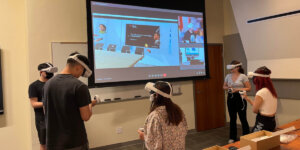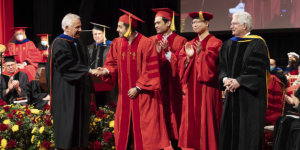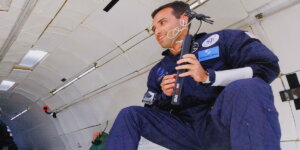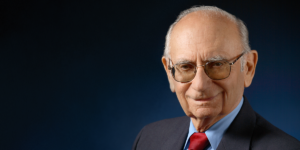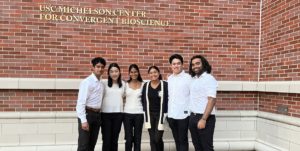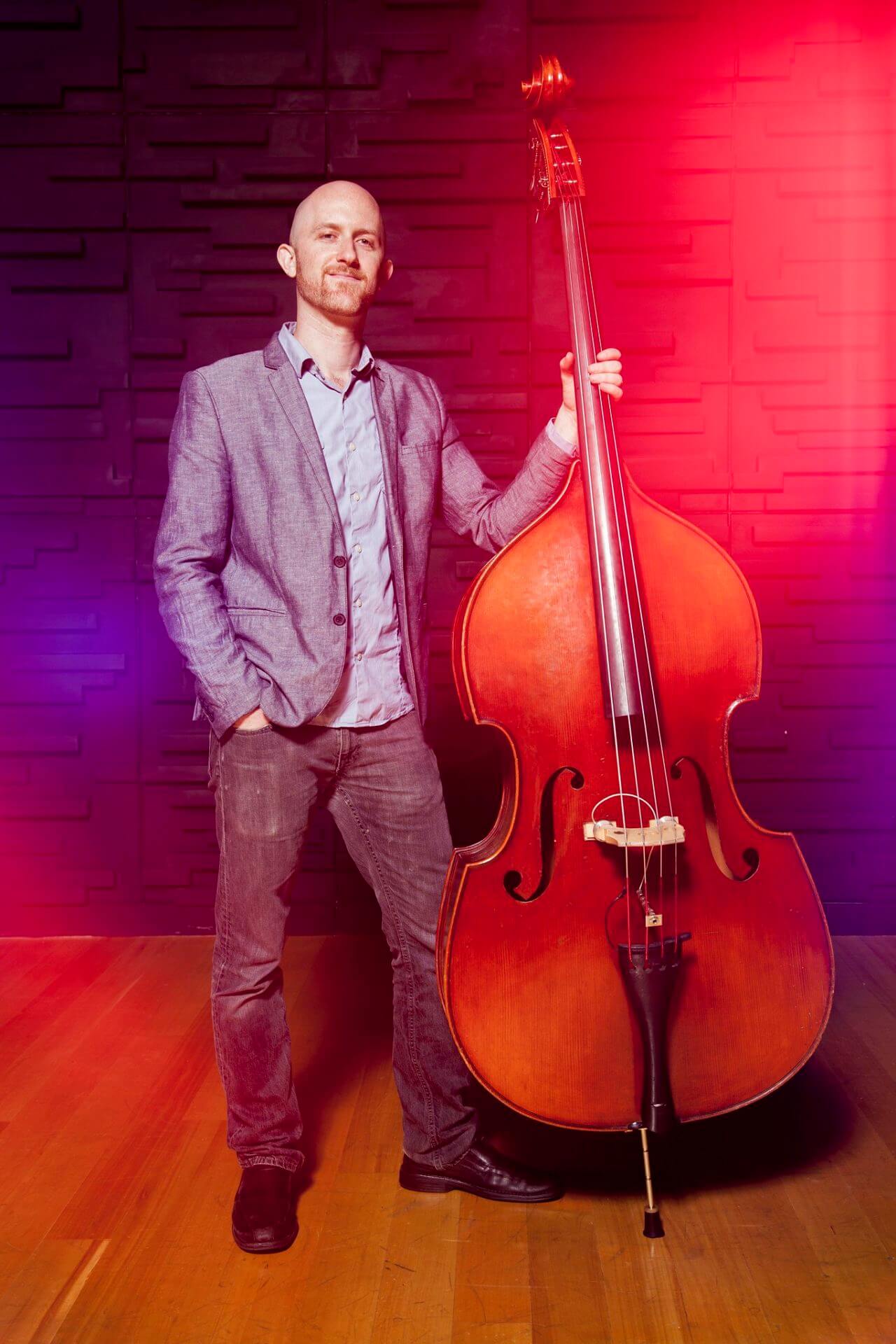
George Ban-Weiss was many things.
A world-class researcher who investigated ways to counter the impacts of climate change and reduce public exposure to air pollutants. One of the world’s “35 top innovators under the age of 35,” as named by the MIT Technology Review in 2014. A bassist extraordinaire whose fluid, muscular playing in genres ranging from jazz to classical to Flamenco won plaudits and touring invitations from peers. A loving father of three sons. The rare academic whose work influenced public policy. A low-key activist who fused music and science together to inspire environmental awareness and change.
On Friday, Oct. 29, Ban-Weiss, an associate professor of civil and environmental engineering at the USC Viterbi School of Engineering, passed away. He was 40.
“George was one of the most extraordinary people that I’ve ever met; a true Renaissance man. He was so talented and touched so many lives, but still managed to be one of the most humble people I know,” said Kelly Sanders, the Dr. Teh Fu Yen Early Career Chair and associate professor of civil and environmental engineering, who co-advised some Ph.D. students with Ban-Weiss. “Even when he was in the throes of battling cancer, he always created time and space for his family, friends, students and colleagues.”
Added Hannah Ban-Weiss, his younger sister: “He was the rock for the rest of his family, always there for any of us whenever we needed him and his support.”
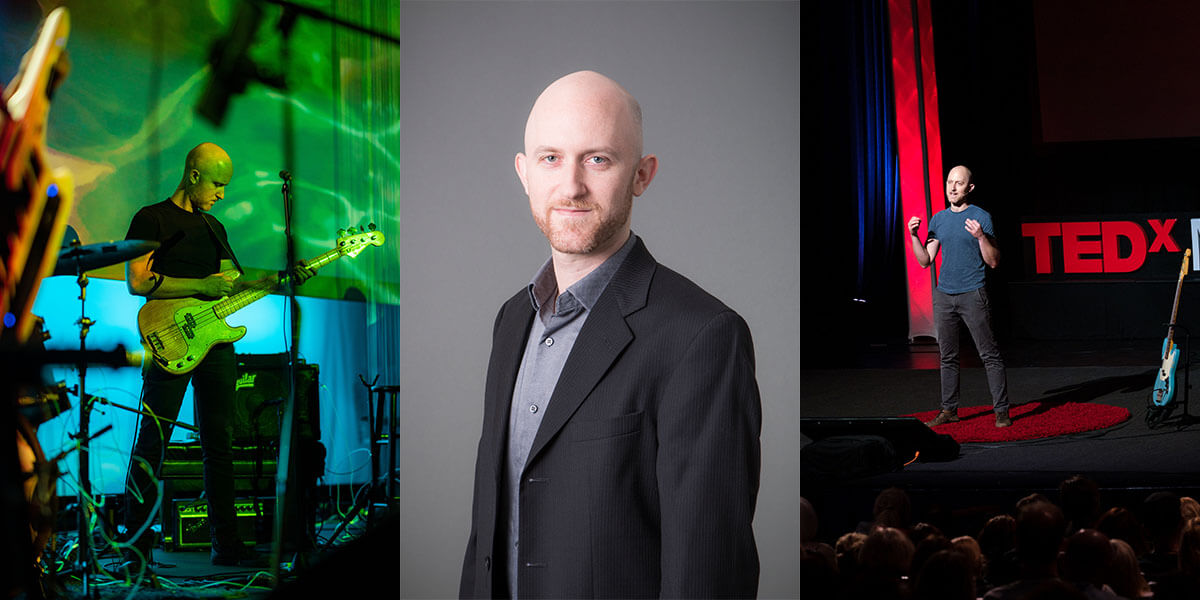
A self-described “professor by day and professional bassist by night,” George Ban-Weiss revolutionized the way cities like Los Angeles sought to lower urban temperatures with lighter or reflective “cool roofs.”
Influencing policy
Ban-Weiss, the David M. Wilson Early Career Chair, continued to make a difference right until the end.
To help combat climate change and improve the air quality of the nation’s second-largest city, Los Angeles and the U.S. Department of Energy’s National Renewable Energy Lab, or NREL, recently partnered to produce a path to a zero-emissions future. Ban-Weiss penned the report’s sections about air pollution.
In April, just a month after The LA100’s release, Mayor Eric Garcetti committed to transitioning Los Angeles to a carbon-free power grid by 2035, with renewables accounting for as much as 80% of the grid by 2030.
Also this year, a paper co-authored by Ban-Weiss and Jiachen Zhang, a USC Viterbi Ph.D. student, showed that so-called “cool walls” could significantly reduce urban air temperatures and ozone concentrations in Los Angeles County. That research inspired the U.S. Green Building Council to give LEED building credits for using cool walls to reduce building energy consumption and mitigate urban heat islands, a phenomenon in which cities are several degrees warmer than surrounding areas.
A few years earlier, Ban-Weiss created a map of Los Angeles that showed all roofs, along with their sunlight absorption properties. The imagery revealed that roofs covered about 20 percent of the city. And the majority of them were very absorptive and inefficient.
Armed with his large map of L.A.’s rooftops, Ban-Weiss made a presentation about his work at a spring 2013 conference, organized by the advocacy group Climate Resolve, on ways to improve the city’s climate resilience. He told the assembled that replacing dark roofs with lighter or reflective ones could cut air conditioning usage by 10 percent to 20 percent and position the city to better deal with climate change. Then-Mayor Antonio Villaraigosa gave the opening remarks at the event.
“The maps that I created made it very clear that the current state of residential roofs in Los Angeles is very inefficient and that there’s room for a lot of improvement,” Ban-Weiss said at the time.
A few months after the conference, the Los Angeles City Council passed an ordinance mandating that roofs on new homes have light roofs or ones that reflect in the near-infrared part of the spectrum so that they maintain their dark appearance without absorbing heat.
Ban-Weiss’s innovative research also landed him a raft of awards.
He won a National Science Foundation Early Career Award in 2018; a Global Environmental Change Early Career Award from the American Geophysical Union (AGU) that same year; and was named a TR-35 in 2014. Two years ago, Ban-Weiss gave a TEDx talk for TEDx Manhattan Beach.
A mentor who cared
Ban-Weiss was known as much for his mentoring and teaching as for his scholarship.
Joseph Ko, an environmental engineering Ph.D. student whom Ban-Weiss advised, called him one of the kindest and most intelligent people he had ever known. Ko said Ban-Weiss gave him confidence, guidance and direction.
“He taught me essentially how to do research, but more than that, he really gave me wisdom on how to navigate through life,” said Ko, who co-authored a couple academic papers with Ban-Weiss. “Whenever I was feeling the imposter syndrome or having hard times due to personal circumstances, he would always provide me with motivation and positive affirmation to get my head back on my shoulders again.
“I will always remember something he told me this past summer,” Ko added. “He told me that he saw his Ph.D. students in a similar way any parent would look at their kids. Paraphrasing his words, he wanted to support us to ‘do better than him’ in the future, just as any parent wants to see their kid succeed and surpass their level of success when they grow up. He was that kind of mentor.”
Hannah Schlaerth, another of his Ph.D. students, said Ban-Weiss’s passing has left her reeling. When she thinks of him, though, a flood of good memories wash over her.
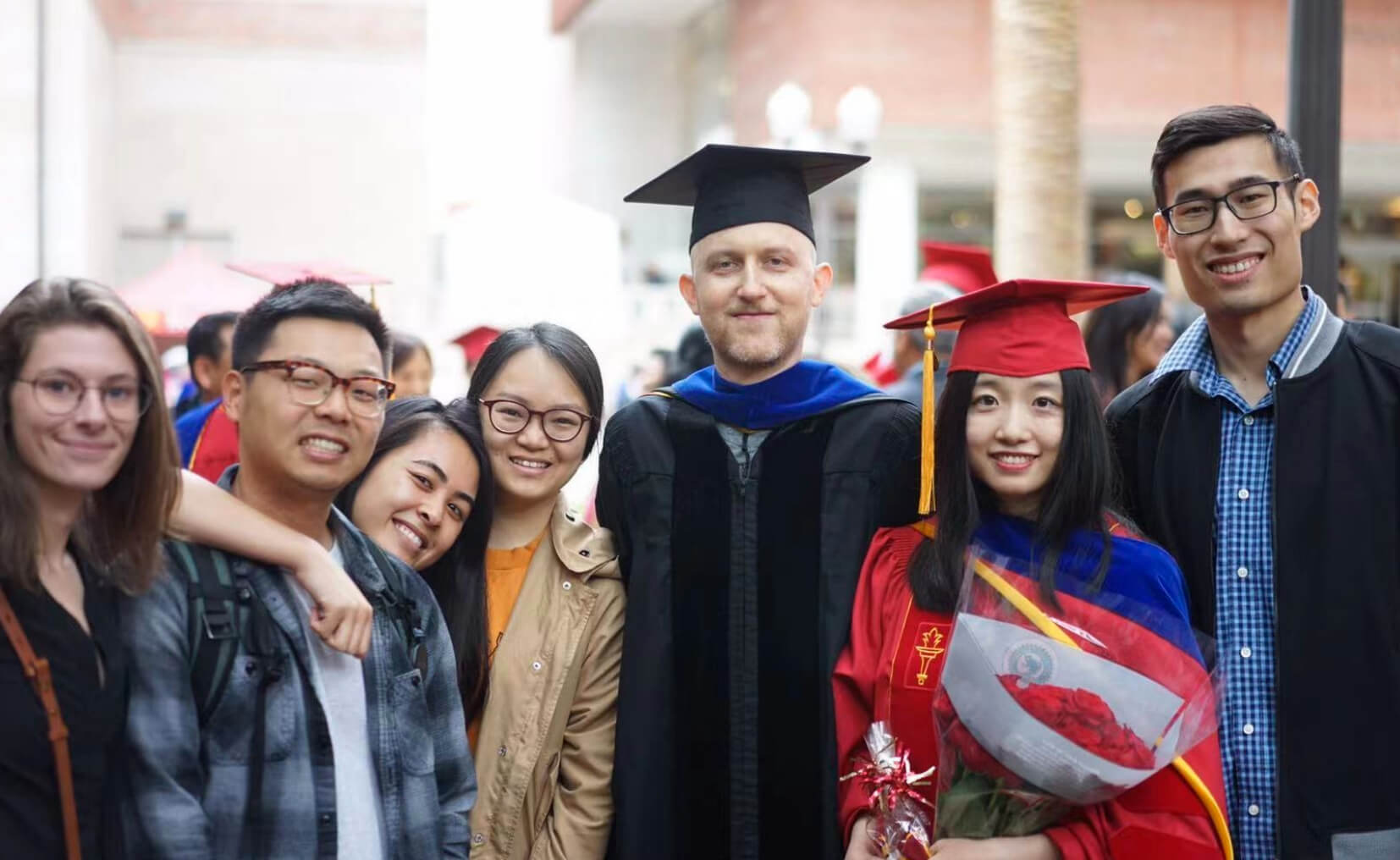
Professor George Ban-Weiss and some of his students (Photo/Courtesy of Trevor Krasowsky)
“George was the kind of person you would add to your committee and know that when it was time to defend, there would be at least one face in the room that you could look to for kindness and support,” she said.
Ban-Weiss’s first Ph.D. student, Trevor Krasowsky, said his former doctoral adviser was like a big brother to him and his “greatest influence.”
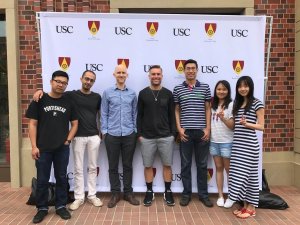
(Photo/Courtesy of Trevor Krasowsky)
“He was always generous with his time, but so many people wanted his attention. My secret was to follow him to the breakroom where he would manually brew his signature drip black coffees,” said Krasowsky, a USC Viterbi part-time lecturer of civil and environmental engineering, who, in 2018, received the William F. Ballhaus, Jr. Prize for Excellence in Graduate Engineering Research. “This usually bought me the extra few minutes of golden advice that I needed to overcome an obstacle with my research or in life.
“I will miss the way he could guess my mood after I said the first word to begin a conversation,” Krasowsky added. “He was the first person I would call before, during and after life’s big moments. He was more than a mentor. He was my rock.”
True Grit
Ban-Weiss confronted his demons head on, whether a fear of flying or cancer, Hannah Ban-Weiss said.
Flying frightened a young Ban-Weiss to the point that he never wanted to go on an airplane. Where most people would have simply avoided planes, Ban-Weiss decided to pilot them. Over the years, he saved money for expensive flying lesson and eventually learned how to fly small Cessnas, earning his pilot’s license at 17. “He always said that he would feel less fearful if he was the one that was in control of the airplane,” Hannah Ban-Weiss said.
George Ban-Weiss brought that same can-do spirit to his battle against cancer, which lasted six long years. Even in the midst of exhausting treatments, Ban-Weiss somehow found time to support a friend whose wife had the disease.
“George went through hell and back with many different treatments and surgeries. Just like in other aspects of his life, he never gave up,” Hannah Ban-Weiss said. “Even with everything he was going through, George never wanted people to feel sorry for him or feel bad for him, so he kept a lot of what he was going through to himself. George always thought about other people first; he was such a selfless individual.”
Music on my mind
Music came naturally to Ban-Weiss. As a little boy, he taught himself to play “Twinkle, Twinkle Little Star” on the piano before even taking a single lesson. He could play almost any song by ear after hearing it only a couple of times, Hannah Ban-Weiss said. “A fond memory of my parents was when George was around 3 or 4 and would grab a tennis racket and pretend to play upright bass and play along with music in ‘Sesame Street’ or the ‘Charlie Brown’ movies,” she said.
As in the academy, Ban-Weiss brought a willingness to push creative frontiers, experiment and take risks to music. He felt most comfortable out of his comfort zone.
A virtuoso musician, Ban-Weiss most recently gigged in Los Angeles with Paco Versailles and Chez Moi, both led by Ryan Merchant of Capital Cities. Previously, he lived and performed in the San Francisco Bay Area for more than a decade. Over the years, Ban-Weiss played upright and electric bass at some of the nation’s marquee small clubs, including the Roxy Theatre in West Hollywood and the Warfield Theatre and the Great American Music Hall in San Francisco.
Drummer Matthias Bossi first met Ban-Weiss in 2009 at a San Francisco recording session for John Vanderslice. Over the years, Bossi and Ban-Weiss played and toured together in a group called Rabbit Rabbit Radio and later in Black Inscription, a music project that debuted in 2017 at USC.
“We made a formidable rhythm section,” Bossi said. “It was like I was the pole in a tether ball game, and he was the ball attached to the string – endlessly, and at great speed, winding his way around me.”
Ban-Weiss, like Bossi and his wife Carla Kihlstedt, a composer, lyricist, educator and violinist, had long wanted to find a way to use music to raise awareness about the environment. Together, they discovered their outlet with “Black Inscription,” a song cycle that follows the journey of free-diver Natalia Molchanova through the ocean as she becomes less human and more a part of the sea itself.
In 2016, Ban-Weiss encouraged his friends to put together a proposal for a USC Vision & Voices concert: “Lost City: Songs from a Changing Sea.” Bossi, Kihlstedt and Jeremy Flower wrote, in Kihlstedt’s words, a “rock oratorio” for which Ban-Weiss secured funding. The piece made its debut in April 2017 at Tommy’s Place on the USC campus; Ban-Weiss played bass. It soon became Black Inscription, a live multimedia show that they performed several times on the East Coast.
“None of that would have happened without George’s smarts or ties to the science community,” Bossi said.
Added Kihlstedt: ”I think we were all motivated by our love of music, the craft of music, song forms and a desire to make them relevant to our concerns as environmentalists and for George, as a scientist.”
Professor Burcin Becerik-Gerber, chair of the Sonny Astani Department of Civil and Environmental Engineering, called Ban-Weiss “an amazing communicator; just Google his name and you will see how he combined music with his science to communicate important issues in a way everyone can understand.
“He was unique because he was perfect,” she added. “George achieved more in his 40 years of life than some people do in 80.”
Published on November 8th, 2021
Last updated on November 11th, 2022




